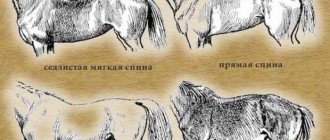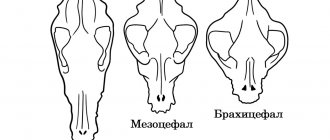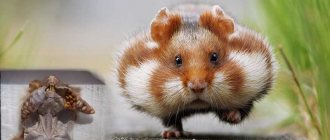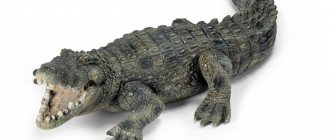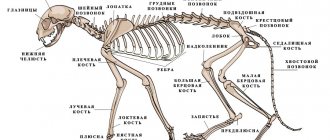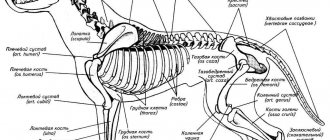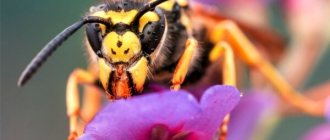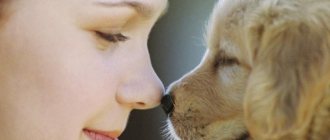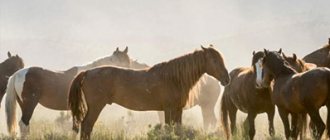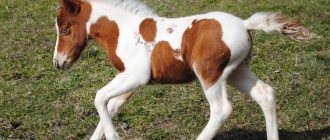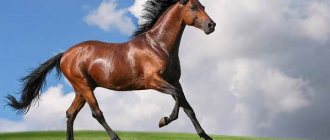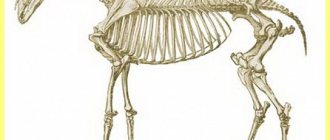17.12.2013
Tips for horse lovers
Since ancient times, the horse has been tamed by humans and not only makes work easier, but also brings income. However, recently, a horse means much more to a person than just help in work. She became a friend to the man. Many psychologists advise people to communicate with horses. But few people thought about the structure of a horse, which is important in order to understand them better.
Basics or articles
The study of anatomy begins with an examination of the skeleton and parts of the animal. The horse skeleton consists of 252 bones that perform motor and support functions. The bones of such a large but very dynamic animal are subject to large static loads. Therefore, the skeleton is very strong.
For comparison, horse bones can withstand compression 2-3 times greater than granite, and in terms of tensile strength they are close to cast iron or brass.
Photo gallery
We invite you to look at some more interesting photos from our photo gallery.
Photo 1. Regularly shaped croup
Photo 2. Pike profile of an Arabian horse
Photo 3. Different shapes of horses' backs
Photo 4. Structure of a horse's hoof
Head and neck
The head is divided into facial and occipital parts. The first includes ears and forehead, eyes, ganache. In front is the horse's muzzle.
Ganache is the name given to the chewing muscles that hold the lower jaw in place. Externally, this structure looks like raised protrusions below the horse’s ears.
A horse's head, unlike a pony's, must first of all be proportional to the body. In ponies it is much larger in relation to the overall size of the body. The horse's skull consists of 34 very strong flat or concave bones.
A horse's muzzle is the animal's upper lip combined with the nose.
The nostrils and chin (lower jaw) are examined separately. A disadvantage is either a too small or large head. Considering the structure of the head, the following parts are distinguished: ears, forehead, temples, eyes, cheekbones, cheeks, bridge of the nose, nose (nostrils), mouth, cheeks or ganache.
When describing articles, attention is paid to the back of the head. This is the part of the head located behind the ears and connecting the head to the neck.
It is believed that a short poll contributes to better contact between the rider and the horse.
Skeleton appearance
In the most general terms, the structure of the horse's skull includes the brain and facial sections and a free lower jaw. The recesses, each of which must accommodate a horse's eye, are located under the skull on the side of the bony base of the head. There are also auditory canals on the side.
Examining the horse's skull, you can notice its extensive facial part and many thin plates in the nasal region. Their large overall surface area plays a role in making the horse's nose sensitive to odors. The partitions also create a kind of labyrinth where the air can warm up before entering the lungs.
The head is connected to the body through the cervical vertebrae. The horse's skull is movably attached to them at the condyles. Further, the spine consists of the thoracic region, where its elements have long upper processes. This makes it possible to attach a large number of developed muscles of the shoulder girdle and withers. The dorsal and sacral sections of the spine consist of elements with less pronounced processes. The caudal vertebrae are smaller than all the others and have no processes.
Teeth
Horse teeth are of great importance, since these animals are herbivores and the special structure of the digestive system requires constant chewing of rough plant feed.
The horse's teeth are very strong; in front of both jaws there are incisors, followed by molars. An adult horse should normally have 6 incisors and 12 molars. And in stallions, after the incisors, on each side there is one additional tooth - clicks.
The criteria by which a horse's back is assessed are: width; length; good muscle development.
Horse skin
Examination of the skin allows you to understand the state of the animal’s digestive system and how well its metabolism works. It protects the body from the harmful effects of the external environment and promotes the production of vitamin D.
The skin consists of the following layers:
- The epidermis in which hair grows.
- Dermis. It consists of two layers. The first contains sebaceous and sweat glands, many blood vessels and nerve endings. In the second there are fibers and collagen plexuses.
- The subcutaneous layer contains reserves of nutrients presented in the form of fat.
At the base of the skin are sebaceous glands, which are responsible for lubricating hair and skin, thereby preventing breakage and cracks.
Without sweat glands, thermoregulation could not exist, since they secrete sweat, helping to cool the animal.
Milk is produced and stored in the mammary glands. A mare can produce about 20 liters of milk per day.
Eyes
These animals have lateral eyes, which helps increase vision. If you need to see what is happening on the left or right side, it is not necessary for the horse to turn his head and tense his muscles. But there is one nuance regarding vision. Everything in front of her nose and behind her rump falls into her blind spot.
The pupil and iris are dark in color and brown or black. Pigmentation is also allowed. This does not in any way affect the overall working qualities of the animal.
The horse's eye is moderately convex, with a thin eyelid. Excessive convexity indicates disturbances in the functioning of the visual apparatus.
Musculoskeletal system
The skeleton, ligaments and muscles of a horse in its anatomy form the musculoskeletal system. The role of the skeleton is support-bearing, supporting.
Each muscle has two parts:
- connective tissue stroma (supporting part);
- muscle parenchyma (working part).
Muscles have the ability to contract, giving the animal the ability to make movements (dynamic function) and strengthen joints at the desired angle (static function). Due to work, muscles increase their mass. Static load increases muscle stroma.
In total, in the horse’s body there are 200-250 paired muscles and several unpaired ones, which are divided:
- on smooth (vascular walls);
- striated (skeletal muscles);
- cardiac striated (heart).
Ligaments and tendons are like parallel ropes of collagen protein. Tendons attach muscles to bones. They develop later than muscles by about eight times.
Knowledge of horse anatomy will help you avoid many horse injuries and illnesses. Only by understanding the anatomy and physiology of a horse can you create conditions for long and productive work with your horse.
Tail
The tail is formed by a rib and hair.
The last extension of the spine is called the reticulum. Thanks to the muscles, the mobility of the tail is ensured.
The tail not only helps horses protect themselves from blood-sucking insects, but also plays a role in coordinating movements. Today, many horse owners braid their pets' tails with ribbons.
Cervical region
If we talk about the main evaluation criteria, then the length and angle of inclination are taken into account. It is best if the horse's neck is of medium length. Animals with long necks experience significant stress in supporting their heavy heads. Strong pressure leads to rapid fatigue of the animal. On the other hand, such horses have higher maneuverability and outperform their short-necked counterparts in this parameter.
Horses with a short neck have good endurance and are adapted to long-term stress. The respiratory tract of animals is short, and therefore their breathing rate is increased. A normal indicator is the cervical region, which is 20% longer than the head. This body structure provides endurance and allows one to acquire sufficient maneuverability.
The extension of the neck (its height when leaving the body) is assessed separately; here, too, the average is considered ideal. The most optimal angle is 45 degrees, as well as good muscularity.
Ears
Ears for horses and ponies are a very important sensory organ. Having good hearing, animals can easily navigate in the dark, in unfamiliar areas, and recognize signals at a distance of hundreds of meters. Horses' ears themselves consist of soft cartilaginous tissue, are high, most often straight and very mobile. The horse can turn each ear in different directions independently of each other. In addition, the ears are an excellent reflection of the emotional state, showing anger, irritation, fear or interest of the animal, as in the photo.
The horse has five main senses:
- gustatory
- olfactory
- tactile
- auditory
- visual
The organ of smell is located in the nasal cavity. Horses have a particularly sensitive sense of smell, which allows them to determine the condition of the feed and refuse it if the food is spoiled.
The organ of vision is the eye, which consists of the eyeball connected to the brain and other organs.
The eyeball is located in the bony socket and consists of a membrane, blood vessels, nerves and light-refracting media.
Body structure
The structure of a horse is associated with such a concept as constitution. This is the totality of all physiological and morphological features that are responsible for the exterior of the animal. The constitution is determined by individual development, as well as heredity. Today they distinguish between a strong and dense body - a dry constitution, and a rough, loose constitution - a damp constitution. Desirable is dry with a dense physique and good muscles.
Neck
Normally, the neck should be 25-30% longer than the head. However, its shape and length vary among different horses. For example, a long neck may indicate greater maneuverability and speed of the horse. But on the other hand, a horse with a short neck gets less tired, since the respiratory tract is shortened. Although it indicates poor development of the anterior muscles and less mobility.
The shape of a horse's neck can be curved or swan-shaped, as well as straight. A straight neck, but with a well-convex nape, is considered the most comfortable. A horse's mane grows on the outer part of the neck. In some horses it is thick and long, in others it is shorter and sparse.
Withers
One of the important places in the structure of the front part of the body. The horse's withers connect the shoulder blades to the rest of the body and can have different lengths and heights. For example, high withers provide good movement of the neck and head. But long and low means an oblique shoulder blade, which allows for a large extension of the front legs.
Back
Also rated by shape and length. Ideally, it should be of optimal proportional structure. A long back can indicate a loose constitution, poor ligament of the front and croup. This is often what occurs in working horses. A short one, on the contrary, conveys the work of the hind limbs well, but reduces maneuverability.
The shape of the back can be soft - sagging, carp-shaped - convex and straight - a slight bend. The most acceptable form is considered to be straight. But sagging often occurs due to improper saddle, injuries to the withers or lower back. Carp-shaped indicates very good coordination and connection between the front and rear. This back shape is favored in working horses.
Croup
Rated by length, width and slope. This is a very important part of the horse's body. Ideally, the croup should be approximately 35% of the body length. A shorter length is allowed only for racing horses. If you evaluate the width, then when viewed from the rear it should cover the entire body.
As for the slope, the croup can be flattened, normal or straight. It varies from horse to horse, but the most common is normal. For racehorses, a lowered one is more acceptable, as it allows the front legs to be carried out well. But a straight croup is characteristic of steppe horses. The most desirable shape is an oval croup.
Thorax and belly
The chest is assessed by depth and width. In this case, depth is more important for riding breeds, and width is more important for heavy horses. A deep chest is characteristic of a large lung and heart capacity. It is also important to evaluate the roundness of the ribs. The more round they are, the greater the capacity of the chest.
As for the belly, normally it should be taut, hazy, that is, rounded at the bottom, and smoothly continue the line of the chest. A strongly retracted stomach indicates a lack of intestines or some kind of disease. But a belly that is too convex or saggy indicates excess weight and sagging muscles.
Limbs
A horse's legs are extremely critical to their use and performance. Looking at the skeleton, we see that the forelimbs consist of the shoulder blades, shoulder joint, upper arm, elbows, forearm, wrist, fetlock and hoof. The hind legs consist of the hip, thigh, knee, shin, hock, metatarsus, fetlock and also the hoof. Especially good muscles should be on the hind limbs.
A horse's hooves are the most important part of the body. Their illnesses and injuries lead to lameness and even loss of the ability to move. It consists of three layers: the horn or shoe, the base of the skin and the subcutaneous layer. For more details on the structure of a horse's leg, see the photo diagram.
Tail and mane
Of course, it’s hard to imagine any normal horse without this hair. The horse's mane covers the entire neck area, starting from the forehead - the bangs - and ending with the withers. The horse's tail begins at the end of the croup - the rib of the tail - and continues all the way to the fetlock joint. The length is determined by the breed and method of keeping the animal. Both the horse's tail and mane have the same color, but may differ from the main color of the body.
Innervation
The horse’s nervous system, which is divided into two fundamental functional units, deserves special attention:
- central – central brain generator;
- vascular - the basis of the heart muscle.
The spine of a horse is similar to that of a human, so their innervation occurs in the same way. The only difference is that in humans, due to the vertical position, there is a large load on the vertebral parts. Throughout life, they succumb to friction and pain in the back is noted. The horse does not have such a problem, due to the fact that there are separate fibers of nerve endings.
Wool
The entire body of the animal is covered with special integumentary hair. In summer it is smooth and short, and in winter, when the temperature drops, it becomes long and soft with a dense undercoat. The condition of the hair and coat can be used to judge the conditions in which the horse is kept. In addition, horses have special tactile hairs or whiskers. They are located in the ears, nose, lips, and near the eyes. Such dense thick hairs act as nerve endings.
Thus, we have sorted out what parts of a horse exist. Anyone who keeps such an animal must know the anatomy and structure of a horse. Only in this case can the animal be correctly used for various purposes, for example, transporting cargo with it or using it for racing.
A few words about internal organs
The internal organs are almost identical to those of herbivores. The lungs have some differences, but not in structure, but in volume, which allows horses to inhale a large amount of air at a time. The lungs occupy almost the entire chest cavity. This feature allows you to develop high speed and increases endurance.
When assessing a horse's structure, the most attention is paid to the articles. Thanks to them, you can determine how to use the animal based on its parameters. The determination of a horse for a particular sport is influenced by various indicators, for example:
- sternum volume;
- shape of the cervical region;
- croup
Racehorses need to move and maneuver quickly, and therefore this is expressed in their physique. The animals are tall, have a lightweight general type, and well-developed muscles.
We invite you to join our Zen channel and group on VKontakte or Odnoklassniki, where new articles are published, as well as news for gardeners and livestock breeders.
Similar articles:
- Tips for choosing saddle pads for horses
- Why are stallions castrated?
- Requirements for keeping horses in a private yard
Positioning of the limbs
- a) clubfoot
- b) normal setting
- c) size
- d) X-shaped
- d) normal
- e) O-shaped
- g) hind legs set far back
- h) saber stance
The limbs of the horse,
the tail position can be: a) high; b) correct; c) pressed
Horse tail
Croup
Starts from the middle of the dorsal cover and ends at the top of the tail. This part of the horse accounts for 1/3 of the body length; in animals used for racing, this section is somewhat shorter. Croup can be of three types:
- normal;
- raised;
- lowered;
Most horses have a normal croup; in individuals participating in racing, it is lowered. If you examine the animal from behind, the croup should overlap the body up to the scapular expansion.
Raised croup in horses
Need to know. A lowered croup prohibits the use of a horse for draft work. Otherwise, injuries to the hip joints occur.
